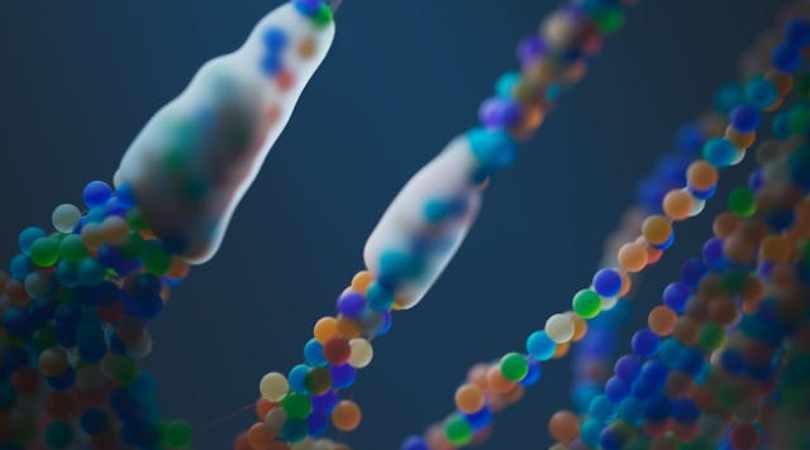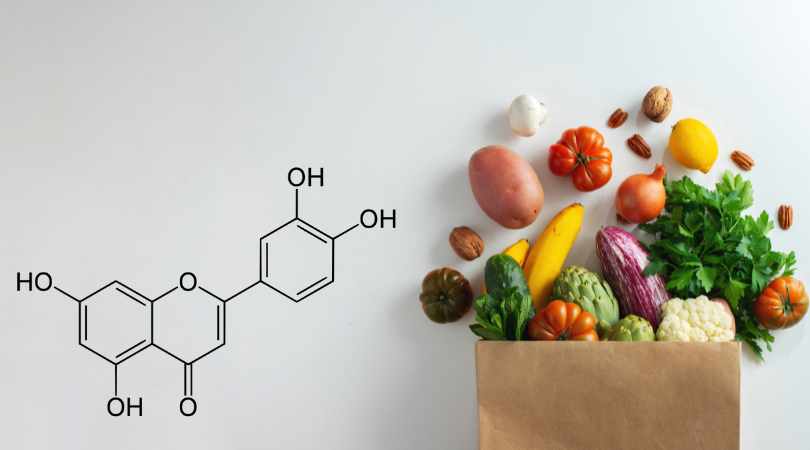Scientists have successfully restored the lost uricase enzyme, a key breakthrough in combating fructose-induced fat formation. This discovery offers new hope for preventing obesity and metabolic disorders by targeting how the body processes sugar and stores fat.
Limited Quantities Available! Order Today and Enjoy Free Shipping on Orders Over $100!
Insulin Resistance
A condition where cells stop responding to insulin, often driven by fat buildup and energy stress from fructose metabolism.
Insulin Resistance Starts Before Blood Sugar Rises
If your cells can’t respond to insulin, it’s often because their energy systems are already under stress—often from hidden fructose metabolism.
Fructose triggers fat buildup in the liver, raises uric acid, and depletes cellular ATP—all of which impair insulin signaling. Even without obvious sugar intake, your body can activate this process internally from refined carbs or salty meals.
SugarShield supports metabolic balance at the root. Its key ingredients are designed to help reduce the cellular burden of fructose metabolism, promoting healthier insulin sensitivity and more stable energy throughout the day.
Explore SugarShieldWhat is insulin?
Insulin is a hormone that is excreted from pancreatic cells in the presence of glucose. It has a multifaceted effect on metabolism in almost all tissues. It acts as a “key” for glucose to “open” cells and enter them from the blood as a fuel providing energy for a variety of metabolic functions (Wilcox, 2005).
As our body senses low insulin response it starts to find other ways of insulin production in order to uptake glucose. As such, the pancreas aims to compensate for poor insulin response by producing more insulin trying to maintain glucose levels. Over time this leads to a cascade of metabolic dysfunction and a condition called hyperinsulinemia – elevated insulin levels (Roberts et al., 2013; Kim and Reaven, 2008). In the end, we experience both endogenous and exogenous glucose entering our blood stream leading to impaired glucose tolerance (high blood sugar levels) and high glycemic index. Too much sugar in our blood is damaging. Therefore, our body aims to remove excess sugar and store it in the liver and muscles. However, the remaining sugar is converted into body fat causing metabolic syndrome.
What is Insulin Resistance?
Constant high fructose levels trigger a cycle of metabolic processes that bypasses insulin regulation and promotes fat accumulation. The mechanism begins with unregulated phosphorylation of fructose molecules by enzyme fructokinase: trapping fructose inside the cell and converting it into fructose-1-phosphate, depleting ATP (cell energy) in the process. This pathway is unique to fructose, as other carbohydrates such as glucose do not trigger the same rapid ATP depletion and fat production. This energy depletion triggers a rise in uric acid, mitochondrial dysfunction, and lipogenesis – the creation of fat. This means even a modest amount of fructose – especially from high fructose corn syrup or sugary drinks – can cause a sharp spike (Softic, et al., 2020).
This combination of events promotes non-alcoholic fatty liver disease (NAFLD), which directly impairs insulin signaling in liver cells. Over time, as liver fat increases, the body becomes less responsive to insulin, even if blood sugar levels are still in a “normal” range. This explains why insulin resistance often begins before blood sugar rises, and why some people with normal fasting glucose levels may still be experiencing significant metabolic dysfunction (Hannou et al., 2018).
How Fructose Contributes to Insulin Resistance
Fructose is metabolized differently than glucose. It bypasses insulin regulation entirely and is processed almost exclusively in the liver. While this may seem harmless, the metabolic consequences are significant. During fructose metabolism, the enzyme fructokinase rapidly converts fructose into fructose-1-phosphate, consuming ATP in the process. This energy depletion triggers a rise in uric acid, mitochondrial dysfunction, and lipogenesis—the creation of fat.
This combination of events promotes non-alcoholic fatty liver disease (NAFLD), which directly impairs insulin signaling in liver cells. Over time, as liver fat increases, the body becomes less responsive to insulin, even if blood sugar levels are still in a “normal” range.
This explains why insulin resistance often begins before blood sugar rises, and why some people with normal fasting glucose levels may still be experiencing significant metabolic dysfunction.
Type 2 Diabetes Mellitus.
Diabetes is one of the most common consequences of insulin resistance. Fructose metabolism leads to impaired insulin production in the pancreas. As less insulin is produced, sugar level can rise to diabetic level: normal fasting blood sugar level - 100 mg/dL; prediabetic fasting blood sugar level - between 100 and 125 mg/dL; diabetic fasting blood sugar level - consistent 126 mg/dL or over. Moreover, it is also associated with endogenous fructose synthesis – when your body generates fructose internally from glucose, triggered by stress, high glucose or salt intake, or dehydration – by activating the polyol pathway – converting glucose to sorbitol (carbohydrate derived from sugars also known as polyol), which is then converted to fructose (Lanaspa et al., 2014). That means its effects can be felt even on a low-sugar or sugar-free diet (Bjornstad, et al., 2015).
Uric Acid Contributions
Uric acid is a silent trigger of insulin resistance that is often underestimated. A byproduct of fructose metabolism, uric acid, when elevated, induces hepatic insulin resistance (Zhu et al., 2014). Studies have found that hyperuricemia impairs mitochondria function and results in metabolic dysfunction (He et al., 2022). It directly inhibits cell signalling, promotes inflammation and oxidative stress, reduces levels of nitric oxide (that is crucial for insulin to stimulate glucose uptake) affecting endothelial function. Improved lifestyle choices – weight loss, hydration and decreased fructose uptake – protect our body.
Mitochondrial Dysfunction and ATP Depletion
Insulin resistance isn’t just about carbs or calories – it’s about cellular energy. Studies suggest that one of the main causes of developing insulin resistance is ectopic lipid deposition (Sangwung, et al., 2020). Decreased levels of ATP (that happens during excessive fructose metabolism) do not let mitochondria (main cell energy source) to work efficiently and the body’s capacity to generate energy declines. The result is fat accumulation in non-adipose tissue, for example, in pancreas or liver. These downstream effects contribute to insulin resistance. The mechanism is simple, yet harmful – when mitochondria is stressed from ATP depletion, it sends signals that reduce the cell’s ability to respond to insulin. This creates a vicious cycle of:
- More fat storage;
- More inflammation;
- More insulin resistance.
Can Insulin Resistance Be Reversed?
Yes – but it requires addressing the underlying metabolic drivers, not just managing blood sugar. Reducing dietary fructose, improving mitochondrial health, and supporting the body’s ability to regulate uric acid and inflammation are all keys. Insulin resistance, if not genetically, is caused by our lifestyle choices.
Strategies to downstream the effect of insulin resistance often include:
- Lowering total carbohydrate load (especially refined sugars);
- Supporting mitochondrial function with natural nutrients;
- Using supplements like berberine (improves insulin sensitivity), luteolin (regulates fructose metabolism), or tart cherry extract (lowers inflammation and uric acid);
- Getting adequate sleep, exercise, and hydration.
Remember – a healthy lifestyle is the main defence against metabolic diseases. Nutritious diet choices, regular health screenings and physical activities are always on your side to fight.
Is insulin resistance purely bad for us?
While insulin resistance is often portrayed as a malfunction, it can be viewed as an initially protective adaptation to cellular energy stress (Barzilai and Ferrucci, 2012). Human physiology is very complex and all the processes happening are there for a reason. Our body always aims to protect us and some harmful consequences defend against something even worse. In metabolic terms, when cells experience low ATP and high oxidative stress – conditions strongly linked to excessive fructose metabolism – reducing their sensitivity to insulin is a way of managing energy allocation (Nolan et al., 2015). By making it harder for glucose to enter certain cells, the body can:
- Prevent further oxidative damage;
- Prioritize energy delivery to the most critical tissues, such as the brain and heart;
- Preserve glucose supply for insulin-independent tissues like the brain, red blood cells, and some immune cells..
Evolutionary hypotheses suggest this response once promoted fat storage for survival during periods of food scarcity or illness. In such contexts, fat was safely stored in adipose tissue, sparing vital organs from ectopic fat accumulation (Soeters and Soeters, 2012). In the modern world, with constant access to calorie-dense foods, year-round fruit and sugar availability, and minimal environmental stress, these protective mechanisms remain switched on unnecessarily. Persistent drivers such as fructose-induced ATP depletion, uric acid buildup, and mitochondrial overload turn what was once an acute survival advantage into a chronic driver of metabolic disease. This reframes insulin resistance not as the primary defect, but as a compensatory step in a deeper chain of metabolic events.
The LIV3 Perspective on Insulin Resistance
At LIV3, we believe insulin resistance is not simply a glucose problem—it’s a fructose metabolism problem. By understanding and supporting the pathways involved – especially those driven by fructokinase and uric acid – we aim to restore the conditions under which cells can regain insulin sensitivity.
The mechanism underlying SugarShield fructose control is liposomal delivery of active ingredients: luteolin is a flavonoid found in various fruits and vegetables that enhances anti-inflammatory and antioxidant defenses and has been shown to directly inhibit fructokinase. Tart cherry extract, rich in anthocyanins, also supports metabolic health by lowering inflammation and uric acid. By blocking fructokinase we aim to stop fructose from draining cellular energy and restore your energy and improve metabolic health.
Recognizing and addressing insulin resistance early is one of the most powerful moves you can make to reclaim your metabolic health.
These statements have not been evaluated by the FDA. This product is not intended to diagnose, treat, cure, or prevent any disease.
Acknowledgment: Content developed with contributions from Kristina Kaktus, student studying BSc Global Health & Social Medicine at King’s College London, as part of the LIV3 Health Science Internship Program.
References
- Cambridge University Hospitals. (2025). Insulin Resistance. NHS. Cambridge University Hospitals (CUH), 4(30938). https://www.cuh.nhs.uk/patient-information/severe-insulin-resistance/
- He, F., Wang, M., Zhao, H., Xie, D., Lv, J., Liu, W., Yu, W., Wang, Q., Chen, B., Xu, C., Yamamoto, T., Koyama, H., & Cheng, J. (2022). Autophagy protects against high uric acid-induced hepatic insulin resistance. Molecular and cellular endocrinology, 547(111599). https://doi.org/10.1016/j.mce.2022.111599
- Lebovitz H. E. (2001). Insulin resistance: definition and consequences. Experimental and clinical endocrinology & diabetes : official journal, German Society of Endocrinology [and] German Diabetes Association, 109(2), 135-148. https://doi.org/10.1055/s-2001-18576
- Nir Barzilai, Luigi Ferrucci,. (2012). Insulin Resistance and Aging: A Cause or a Protective Response? The Journals of Gerontology: Series A, 67(12), 1329-1331. https://doi.org/10.1093/gerona/gls145
- Nolan, C. J., Ruderman, N. B., Kahn, S. E., Pedersen, O., & Prentki, M. (2015). Insulin resistance as a physiological defense against metabolic stress: implications for the management of subsets of type 2 diabetes. Diabetes, 64(3), 673-686. https://doi.org/10.2337/db14-0694
- Purwar, A., & Nagpure, S. (2022). Insulin Resistance in Polycystic Ovarian Syndrome. Cureus, 14(10), e30351. https://doi.org/10.7759/cureus.30351
- Roberts, C. K., Hevener, A. L., & Barnard, R. J. (2013). Metabolic syndrome and insulin resistance: underlying causes and modification by exercise training. Comprehensive Physiology, 3(1), 1-58. https://doi.org/10.1002/cphy.c110062
- Sangwung, P., Petersen, K. F., Shulman, G. I., & Knowles, J. W. (2020). Mitochondrial Dysfunction, Insulin Resistance, and Potential Genetic Implications. Endocrinology, 161(4), bqaa017. https://doi.org/10.1210/endocr/bqaa017
- Sarah A. Hannou, Danielle E. Haslam, Nicola M. McKeown, and Mark A. Herman. (2018). Fructose metabolism and metabolic disease. The Journal of clinical investigation, 128(2), 545-555. https://doi.org/10.1172/JCI96702
- Soeters, M. R., & Soeters, P. B. (2012). The evolutionary benefit of insulin resistance. Clinical Nutrition, 31(6), 1002-1007. https://doi.org/10.1016/j.clnu.2012.05.011
- Softic, S., Stanhope, K. L., Boucher, J., Divanovic, S., Lanaspa, M. A., Johnson, R. J., & Kahn, C. R. (2020). Fructose and hepatic insulin resistance. Critical reviews in clinical laboratory sciences, 57(5), 308-322. https://doi.org/10.1080/10408363.2019.1711360
- Sun H. Kim, Gerald M. Reaven. (2008). Insulin Resistance and Hyperinsulinemia: You can't have one without the other. Diabetes Care, 31(7), 1433-1438. https://doi.org/10.2337/dc08-0045
- Wilcox, G. (2005). Insulin and Insulin resistance. The Clinical biochemist., 26(2), 19-39. https://pmc.ncbi.nlm.nih.gov/articles/PMC1204764/
- Yuzhang Zhu, Yaqiu Hu, Tianliang Huang, Yongneng Zhang, Zhi Li, Chaohuan Luo, Yinfeng Luo, Huier Yuan, Ichiro Hisatome, Tetsuya Yamamoto, Jidong Cheng. (2014). High uric acid directly inhibits insulin signalling and induces insulin resistance. Biochemical and biophysical research communications, 447(4), 707-714. https://doi.org/10.1016/j.bbrc.2014.04.080






